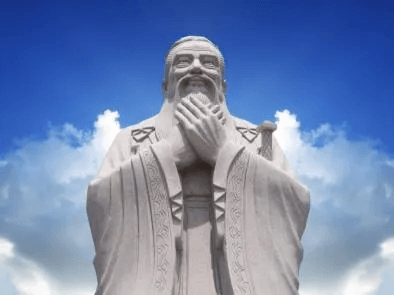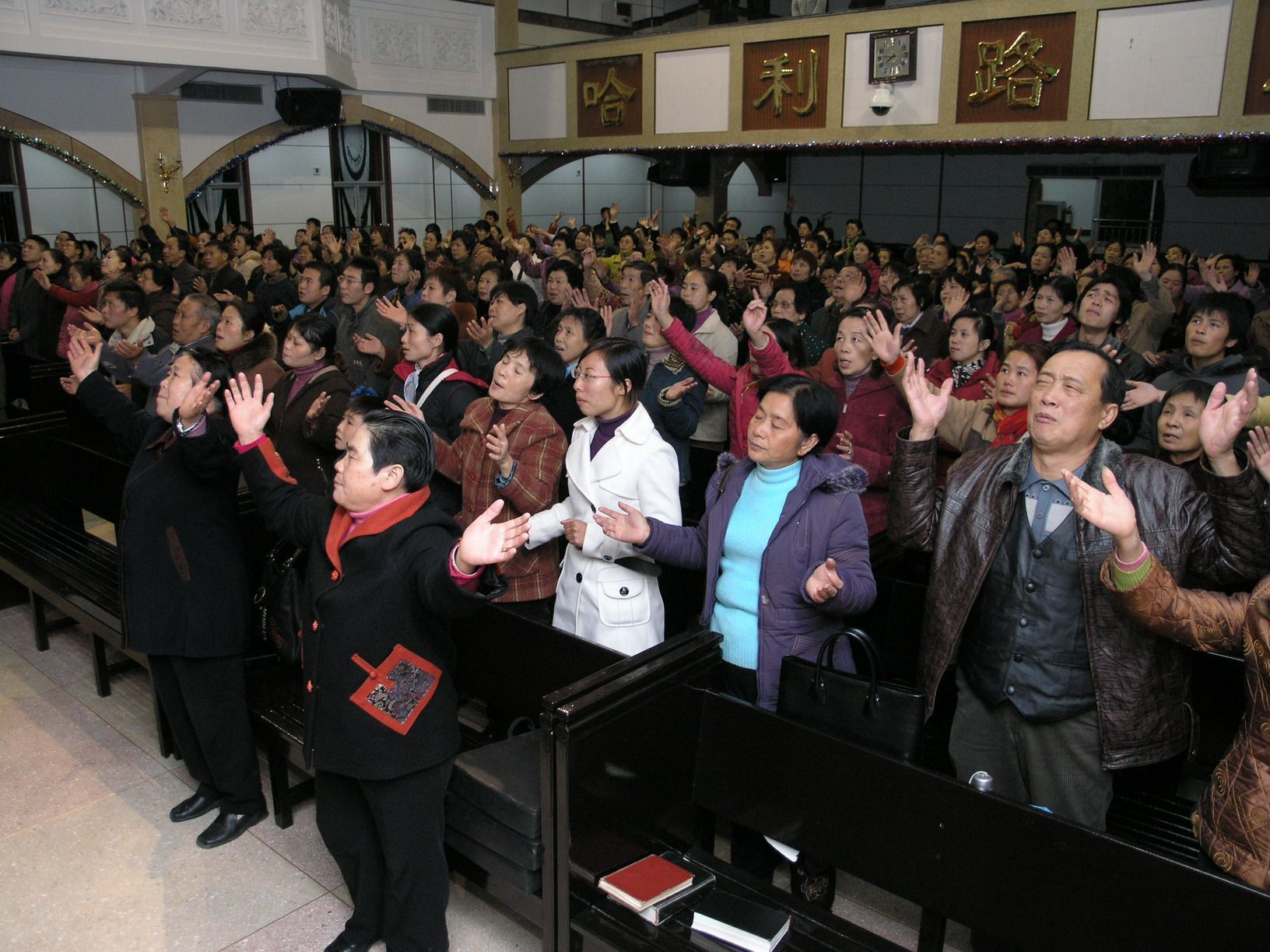Introduction to Shandong Province
East of the Mountains

A view from the summit of the Taishan range.
Shandong, a crowded province containing 95.8 million people at the time of the 2010 census, is a turtle head-shaped province sticking out into the Yellow Sea toward the Korean Peninsula. It is the second most populated province in China after Guangdong (104 million) and just ahead of Henan (94 million).
With an area of just over 60,000 sq. miles (157,000 sq. km), Shandong is slightly larger than the US state of Georgia, but contains approximately ten times as many people. By another comparison, Shandong covers a slightly larger area than England and Wales combined, but is home to almost twice the population.
Archaeological evidence shows the existence of human habitation in Shandong dating back about 3,500 years, when the Shang Dynasty rulers controlled the Yellow River plains and held power from 1554 to 1045 BC. This 500-year period encompassed approximately the same span as the biblical account of the birth of Moses in Egypt; to around the time that Saul was anointed the first King of Israel. At the time, some scholars believe Shandong was inhabited by Tai peoples who were later forced south into southern China, where they are found in large numbers today among minority groups like the Zhuang, Dai and Bouyei, and further into Southeast Asia.
Shandong means 'East of the Mountains'—in reference to the Taihang Range that runs down the eastern edge of the Loess Plateau spanning Shanxi, Henan and Hebei provinces. In Shandong the Jade Emperor Peak in the Taishan range is the highest point in the province at 1,545 meters (5,069 feet). Apart from other moderate mountains in the province, the rest of Shandong consists of fertile plains.
The Home of Confucius

Shandong is revered throughout China as the birthplace of two great philosophers, Confucius and Mencius.
Confucius (Chinese name: Kong Qiu) lived from 551-479 BC in the state of Lu in southern Shandong. The province is still nicknamed Lu by many Chinese today.
The sixth century BC was a pivotal era in the shaping of world history. At the same time that Confucius was creating a template for all future Chinese generations, on the other side of the Himalayan Range a man named Siddhartha Gautama, known later as the Buddha, was teaching his new philosophy to an eager group of disciples. Thousands of miles further west, the prophets Ezekiel and Daniel were pronouncing God's message to Israel. Queen Esther was used by God to bring deliverance to the Jews just a few years after the death of the Chinese sage.
Confucius was born into an impoverished family and he had a difficult youth. When he was 50-years-old he held a post as a minor official, but most of his life was spent as a humble teacher. For a period of 14 years, Confucius traveled widely, finally returning home to Qufu at the age of 68. Although he hardly put pen to paper during his lifetime,
"His 3,000 devoted followers recorded his teachings and put them into a book, The Analects of Confucius. After his death in 479 BC, Confucius' followers mourned for three years. A follower named Zi Gong built a hut next to the tomb and stayed alongside his deceased teacher. The site became the Confucius Cemetery, which today contains more than 100,000 graves and 20,000 trees."
Mencius (Chinese name: Mengzi) was born in Shandong 107 years after Confucius' death. He is remembered in China as 'the most famous Confucian after Confucius himself.'
The essence of Confucian teaching is that people should respect and obey those in authority, especially parents, and that society should work for the common good. Over time the belief in a 'mandate from heaven' evolved. Rulers were believed to govern only with the consent of heaven, while corrupt rulers will be overthrown and their kingdoms handed to others.
Although not strictly a religion, Confucian teachings have shaped the worldview and set the ethical and moral compass of every generation of Chinese since. The renowned Shandong missionary John Nevius went so far as to say of Confucius, "The system of ethics and morality which he taught is the purest which has ever originated in the history of the world, independent of the divine revelation in the Bible, and he has exerted a greater influence for good upon our race than any other uninspired sage of antiquity."
The full impact of Confucius' teachings was not felt until later generations, although the Communists disapproved of it and launched campaigns to try to uproot many Confucian beliefs from society. The Kong clan rose to such influence in Shandong that they had the power to administer the death penalty and collect taxes, two things the new leaders of China found intolerable. In 1948, Confucius' direct heir—the 77th descendant in the Kong family line—fled the Mainland for Taiwan, bringing the 2,500-year Kong family dynasty in Qufu to an abrupt end.
Today the city of Qufu is home to the imposing Confucius Temple (Kong Miao), which attracts hordes of tourists, especially during the spring and autumn fairs, and on September 28 each year to celebrate Confucius' birthday. Approximately a quarter of all people in Qufu claim to be direct descendants of Confucius, though many appear to leverage such claims in a bid to boost their ability to profit from the booming tourist industry.
Marco Polo, Governor in Shandong
While most people familiar with the famous travels of Marco Polo would not be surprised to learn that he passed through Shandong during his extensive journeys, few are aware that he also dwelt in the city of Yanzhou in Jining Prefecture, where for three years in the early 1280s the famous Venetian was appointed governor of the area by the Emperor of China, Kublai Khan.
After traveling north into Shandong from today's Jiangsu Province, Polo described the city of Jinan (then called Chinangli). He then noted,
"At the end of your journey you arrive at the very great and noble city of Yanjiu [Yanzhou], which has seven-and-twenty other wealthy cities under its administration; so that this is, you see, a city of great importance. It is the seat of one of the Great Kaan's Twelve Barons.....
The people are idolaters and use paper money, and are subject to the Great Kaan. And Messer Marco Polo himself, of whom this book speaks, did govern this city for three full years, by the order of the Great Kaan. The people live by trade and manufactures, for a great amount of harness for knights and men-at-arms is made there. And in this city and its neighborhood a large number of troops are stationed by the Kaan's orders."
The Infamous Jiang Qing
While Confucius is undoubtedly the most famous native of Shandong, the title of the most despised person probably belongs to Jiang Qing, who hailed from Zhucheng in the central part of the province. Jiang was an actress who became the fourth wife of Mao Zedong. She rose to notoriety as a political figure during the barbaric Cultural Revolution (1966-1976), when tens of millions of Chinese were slaughtered throughout the country.
Jiang formed the radical 'Gang of Four' alliance, but after Mao's death in 1976 she quickly plummeted from power and was held in contempt by subsequent leaders of China. Over time she received much of the blame for the excesses of the Cultural Revolution, spending many years in prison before she committed suicide in 1991.
The Christian world came to hear about Jiang Qing when a rare foreign delegation visited Beijing in 1975. One member of the delegation enquired about the state of the Church in China, to which Mao's wife replied, "Christianity in China has been confined to the history section of the museum. It is dead and buried."
As the pages of this book testify, Jiang was badly mistaken.
China's Sorrow
For most of its history Shandong has been an impoverished rural province. Despite its location on a fertile plain, Shandong's progress was severely hindered by the Yellow River, which is aptly nicknamed 'China's Sorrow'. The river has changed course at least 26 times in its history and brought centuries of terrible floods to the province, resulting in the death of millions of people and the forced migration of millions more, especially to northeast China. At times the river has flooded the entire Shandong Plain.
A Vibrant Economy
The Chinese have a saying: "He who holds Shandong grips China by the throat." Foreign powers were attracted to the rich natural resources of the province and its strategically-located ports, which offer maritime access to Korea, Japan and the east China seaboard. Shandong boasts the longest coastline of any province in China, enabling millions of residents to earn their livelihood from fishing.
Germany seized the port of Qingdao in 1898, setting up factories and transforming the city into the capital of beer production in China, while the British gained control of the coastal town of Weihai. Waves of Japanese invasions blighted the province for decades until the end of the Second World War. Today, the Qingdao area is regarded as the economic hub of the province, while the inland capital city of Jinan is considered its poorer cousin.
As most of Shandong sits on fertile soil, the province ranks first in China for cotton and wheat production, and also produces copious amounts of apples, peaches and pears. Gold and diamond mines now dot the landscape, and it is home to one of the largest sapphire deposits on earth.
The large cities of Shandong are hubs for a wide range of industry, with many chemical, electronic, textile and mechanical factories. The Shengli Oil Field on the Yellow River delta holds one of the largest oil deposits in China. Possessing an abundance of natural resources, Shandong ranks third in GDP among China's provinces, with only Guangdong and Jiangsu above it.
Shandong Today
After several tumultuous decades of flood, famine and war in the first half of the twentieth century, millions of Shandong natives migrated northward to Dongbei— the three northeast China provinces of Liaoning, Jilin and Heilongjiang. Today the Shandong dialect of Mandarin is spoken in many cities of northeast China.
Shandong people are typically regarded in a positive light by other Chinese. They "enjoy a good reputation, for they are stereotyped as loyal, honest, and straightforward.... The women of the province were considered particularly chaste." 4
Despite its massive population of just under 100 million people, Shandong is one of China's most ethnically-cohesive provinces. Remarkably, 99.3 percent of the population are Han Chinese. The only other ethnic minority groups with significant populations are the Muslim Hui people (497,000 people or 0.6 percent), with small communities of Manchu (33,500), Koreans (27,800), and Mongols (23,700).
When other Chinese consider Shandong, they often think of it as China's Holy Land, being the home of Confucius and a place of literature and philosophy. Large numbers of Buddhist and Daoist temples dot the landscape, and for centuries the Chinese emperors ascended the summit of Taishan to perform the annual Border Sacrifice.
The geography of Shandong has shaped the characteristics of its people. One scholar highlighted four factors that have greatly influenced the province. As a peninsula, its people
"share the orientation toward the sea that is characteristic of the populations of the southern coast; this is in sharp contrast to the landlocked world of the peoples of the central plains. Second, much of the province is mountainous, as is southern China. Third, in the modern period, the Shandong people were the only group of northern Chinese to migrate abroad in significant numbers. Fourth, because they were close to the sea, the people of Shandong were subjected to great foreign pressure.... The province was almost carved away from China proper by European and Japanese imperialism."
China's Revival Province
For thousands of years the Almighty God of heaven looked down upon the people of Shandong, desiring to know them as His children. Slowly, the gospel of Jesus Christ was proclaimed throughout the province, and a small remnant of redeemed believers emerged.
Through many hardships and persecutions, the Body of Christ rose from the ashes and grew greatly in size throughout the twentieth century, boosted at regular intervals by sovereign outpourings of the Holy Spirit. Although other provinces of China boast larger Christian populations and a higher percentage of converts today, in many ways Shandong deserves to be known as China's Revival Province.
As the following chapters will reveal, the Living God has done a mighty work in Shandong. Today, approximately five million Shandong residents identify themselves as followers of Jesus Christ; a number more than 40 times larger than at the advent of Communism in 1949.
As you learn about the powerful way the Holy Spirit has transformed entire communities in China's Revival Province over the decades, may you be encouraged, inspired and challenged, and be brought to your knees to experience personal spiritual revival.
© This article is an extract from Paul Hattaway's book 'Shandong: The Revival Province'. You can order this or any of The China Chronicles books and e-books from our online bookstore.
1. Paul Hattaway, China's Unreached Cities, Vol. 2 (Chiang Mai, Thailand: Asia Harvest, 2003), p. 72.
2. Norman H. Cliff, "Building the Protestant Church in Shandong, China," International Journal of Missionary Research (April 1998), p. 62.
3. Marco Polo, The Travels of Marco Polo: The Complete Yule-Cordier Edition, Vol.2 (New York, NY: Dover Publications, 1903), p. 154.
4. Leo J. Moser, The Chinese Mosaic: The Peoples and Provinces of China (Boulder, CO: Westview Press, 1985), p. 58.
5. Moser, The Chinese Mosaic, p. 59.
6. There were 100,000 Protestants in Shandong in 1949, according to Global Chinese Ministries (October 2003).





